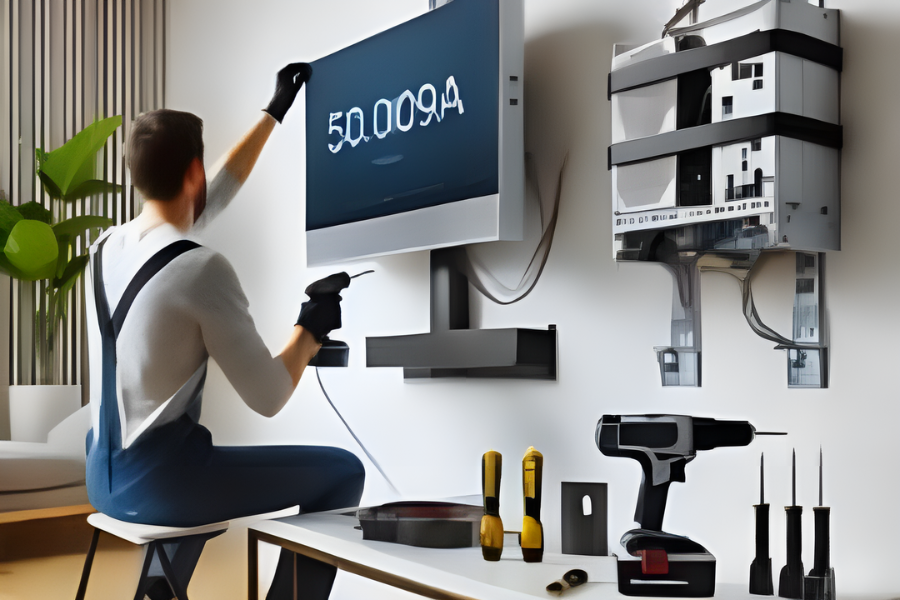50.0009A Installation: A Step-by-Step Guide to Ensuring Avionics Compliance
The aviation industry is a prime example of technical advancement, but it is also governed by strict laws intended to ensure dependability, safety, and operational excellence. The 50.0009A installation guideline is one of several guidelines set by the Federal Aviation Administration (FAA) to govern avionics installation. To maintain system integrity and passenger safety, these rules specify the installation requirements for specific avionics equipment in airplanes.
We will examine the essential components of the 50.0009A installation procedure in this comprehensive tutorial, going over its significance, necessary conditions, and precise steps. This article will give you the knowledge you need to comprehend and carry out these installations in compliance with FAA standards, regardless of whether you work in aviation or are just interested in the mechanics of aircraft maintenance.
Understanding the 50.0009A Standards
A fundamental regulatory framework for the installation of avionics systems in aircraft is provided by the 50.0009A standard. It covers a number of installation-related topics, such as the equipment’s dependability, performance, and safety. The rules were put in place to guarantee that any avionics parts fitted to an aircraft adhere to strict specifications that complement the FAA’s strict safety regulations.
The necessity of thorough testing and thorough documentation during the installation procedure is at the heart of these criteria. The FAA must certify all avionics equipment for use in aircraft, and installers must keep thorough records of every installation step and test result. In addition to providing evidence of compliance, this paperwork is an essential safety precaution that permits responsibility and traceability in the event that problems develop after installation. The lives of those on board are ultimately protected when aircraft equipment function flawlessly thanks to adherence to the 50.0009A regulations.
Pre-Installation Considerations
Thorough pre-installation inspections and considerations must be carried out prior to starting any installation in accordance with the 50.0009A requirements. Verifying that the avionics equipment you are installing is compatible with the particular aircraft in question is the first step. This entails going over the technical specifications of the aircraft and making sure the equipment complies with the relevant operational, safety, and performance requirements.
Additionally, gathering the proper documentation is key to a smooth installation process. This includes obtaining installation manuals, wiring diagrams, and any supplementary documentation that provides guidance. Another important consideration is conducting a site survey of the installation area within the aircraft. This survey helps to identify potential challenges related to available space, access to electrical systems, and environmental factors that may affect the installation process. Addressing these factors early on mitigates the risk of encountering delays or issues during the actual installation.
Required Tools and Equipment
For a 50.0009A installation to be completed successfully, it is essential that your crew has the appropriate equipment and supplies. A mix of standard hand tools, such pliers, screwdrivers, and wrenches, and specialized avionics installation tools, like torque wrenches, crimping tools, and precision wire strippers, are necessary. In addition to these, some installations could need sophisticated testing tools like oscilloscopes, multimeters, and signal generators to guarantee the avionics systems are operating properly.
It is also critical to verify that all equipment and tools are in optimal working condition before commencing installation. Having the proper tools readily available can significantly streamline the process, reducing potential errors and minimizing downtime.
Step 1: Planning the Installation
For any avionics system, but particularly for one that complies with the 50.0009A regulations, the planning phase is essential. Every stage of the procedure is described in a thorough installation plan, which makes sure that everyone on the team is aware of their responsibilities. This strategy need to divide the installation into doable phases and incorporate any backup plans to deal with any unforeseen difficulties.
A timeline for the installation should be created, taking into consideration any unanticipated delays that might occur because of things like resource availability or environmental restrictions. Collaboration is encouraged and the project’s overall efficiency is increased through effective communication during the planning stage. In addition to ensuring a seamless installation, careful planning guarantees that all FAA regulations are strictly adhered to.
Step 2: Preparing the Installation Site
The next stage is to have the installation site within the aircraft ready when the installation design is finished. The workspace must be safe and free of obstructions for the installation crew to function efficiently and reliably during this stage. Strict adherence to safety protocols is essential throughout this period; all employees should get training on safety measures, including how to use personal protective equipment (PPE) correctly.
The installation team must also ensure that the aircraft’s electrical and structural components are conveniently accessible. To establish a comfortable working environment, it may be required to move barriers in the workstation or rearrange equipment. In the end, careful site preparation lowers the possibility of errors and guarantees that the installation goes on without needless delays.
Step 3: Executing the Installation
The team can move forward with the actual installation after the preparation stage is over. Mounting the avionics equipment in accordance with the installation manuals’ instructions is the first stage. For the equipment to operate dependably and stay secure in a variety of flight situations, proper mounting is crucial.
Correctly connecting the equipment is the next crucial step. This entails linking the aircraft’s power supplies, communication networks, and other pertinent subsystems to the avionics system. At this point, accuracy is essential since improper wiring could cause major safety hazards or system problems. Regular inspections are essential during the installation process to ensure that all parts are fitted correctly and in accordance with 50.0009A regulations.
Step 4: Post-Installation Testing
Thorough post-installation testing must be carried out after the installation is finished to ensure that all systems are operating as intended and meeting FAA regulations. These tests include more thorough safety inspections that verify adherence to 50.0009A regulations as well as functional evaluations to make sure the equipment is functioning as intended.
Every test result has to be well documented since it acts as evidence of compliance and offers traceability for future use. You can be sure that the avionics equipment is completely functional and prepared for use in flight if you carefully complete this stage.
Common Challenges and Solutions
While the 50.0009A installation process is methodical, certain challenges can arise, potentially complicating the procedure. Common issues include compatibility problems between the avionics equipment and the aircraft, unforeseen wiring difficulties, and delays caused by external factors such as weather or equipment availability.
One effective strategy to mitigate these challenges is developing a troubleshooting plan that anticipates potential issues. This plan should include a list of common problems and their solutions, enabling the team to respond quickly and efficiently. Open communication among team members is also crucial for addressing any issues that may arise during the installation process.
Conclusion
The installation procedure for 50.0009A is essential to preserving the dependability, usefulness, and safety of aircraft avionics systems. Aviation professionals may guarantee adherence to FAA requirements by comprehending the standards, carrying out appropriate planning, setting up the installation site, carrying out the installation, and carrying out comprehensive post-installation testing.
Success in this area depends on staying up to date with changing regulations and best practices, since legislative changes and technological improvements might affect installation requirements. In the end, aviation professionals preserve the integrity of the aviation business by putting safety, compliance, and continual improvement first, ensuring that everyone may travel by air safely.






